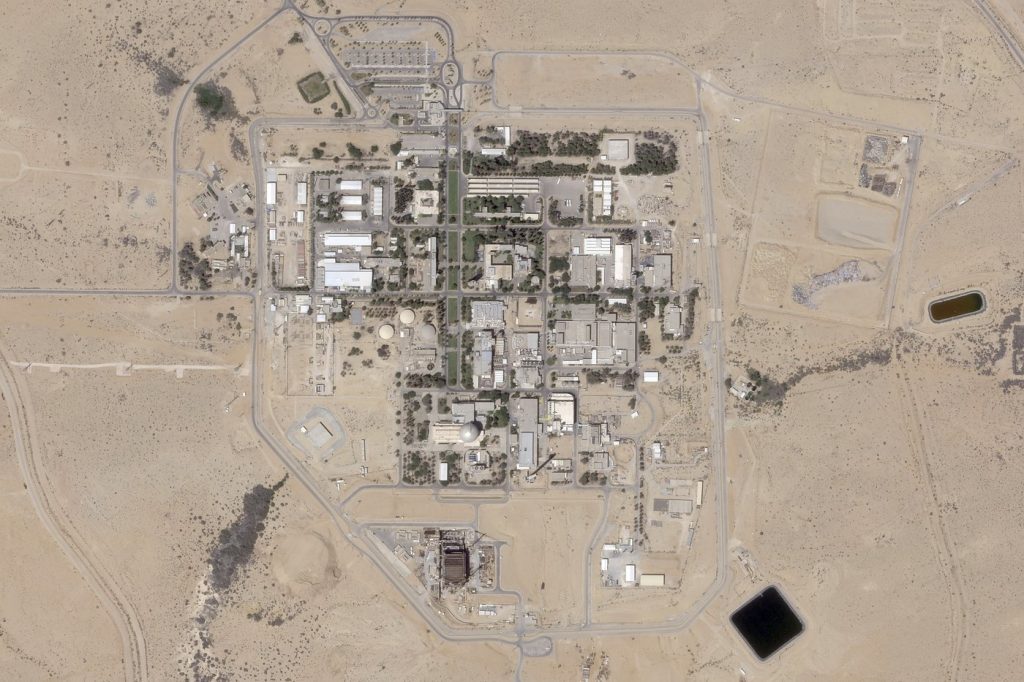DUBAI, United Arab Emirates (AP) - Construction has significantly accelerated at a critical facility linked to Israel's long-suspected atomic weapons program, as evidenced by analyzed satellite images. Experts suggest that the ongoing work may be related to either a new reactor or a facility designed for assembling nuclear arms, although the secretive nature of the program complicates definitive conclusions.
The site in question is the Shimon Peres Negev Nuclear Research Center, located near Dimona, approximately 90 kilometers (55 miles) south of Jerusalem. This development raises renewed inquiries regarding Israel's widely believed status as the only nuclear-armed nation in the Middle East. Furthermore, this construction activity could provoke international backlash, particularly following a recent wave of military actions by Israel and the United States targeting Iranian nuclear sites due to concerns over Iran's potential development of atomic weapons.
Seven experts who assessed the satellite images largely concurred that the construction is associated with Israel’s nuclear endeavors, primarily due to the site’s proximity to the reactor at Dimona, where no civilian power plant exists. However, their opinions diverged on the specific purpose of the construction. Three experts believed that the scale and layout suggest the establishment of a new heavy water reactor, which could produce plutonium, a vital ingredient for nuclear weapons.
The remaining four experts entertained the possibility of a heavy water reactor but also proposed that the construction might pertain to a new assembly facility for nuclear weapons. They refrained from making definitive claims, emphasizing that the early stages of construction limit their assessment.
Jeffrey Lewis, a specialist at the James Martin Center for Nonproliferation Studies, expressed confidence that the ongoing construction is likely a reactor. He remarked that this judgment is circumstantial, yet the historical context of Dimona supports the assumption that it would be a reactor. The current heavy water reactor at Dimona, operational since the 1960s, is approaching the end of its typical lifespan, necessitating either a replacement or significant refurbishment.
Satellite imagery from July 5, taken by Planet Labs PBC, showcased the extensive construction activities at the site, revealing the presence of thick concrete retaining walls and cranes, indicating multiple underground floors. While no visible containment dome is present, experts noted that such features could be incorporated later or that the reactor might be designed without them. Edwin Lyman, a nuclear specialist at the Union of Concerned Scientists, acknowledged the possibility of a reactor without a containment dome but highlighted the challenges stemming from a lack of transparency.
Israel maintains a policy of nuclear ambiguity, neither confirming nor denying the existence of atomic weapons, and the Israeli government did not respond to inquiries regarding the construction. The White House, a key ally of Israel, also refrained from commenting. The International Atomic Energy Agency (IAEA) reiterated that Israel is not mandated to disclose information about its nuclear facilities outside of its Soreq research reactor, further complicating the discourse around Israel's nuclear ambitions.
Past whistleblowers have revealed details about the Dimona facility, leading experts to conclude that Israel has developed a significant number of nuclear warheads. Daryl G. Kimball, executive director of the Arms Control Association, asserted that if a heavy water reactor is being built, it indicates an ongoing effort to maintain or expand their nuclear arsenal. The reactors provide crucial byproducts for nuclear weapons, including plutonium and tritium, which can enhance explosive yield.
Considering this context, the construction at Dimona could be aimed at procuring additional tritium, given its annual decay rate of around 5%. The updated assessments indicate that while the new reactor could be intended to maintain current capabilities, it may not necessarily imply a desire to expand the overall plutonium stockpile.
Israel's nuclear program, believed to have commenced in the late 1950s amid regional conflicts, underscores its strategic deterrence policy through nuclear ambiguity. It stands among nine nations confirmed or suspected of possessing nuclear weapons and is one of only four countries that have never acceded to the Nuclear Nonproliferation Treaty, thereby limiting international oversight of its nuclear initiatives.










